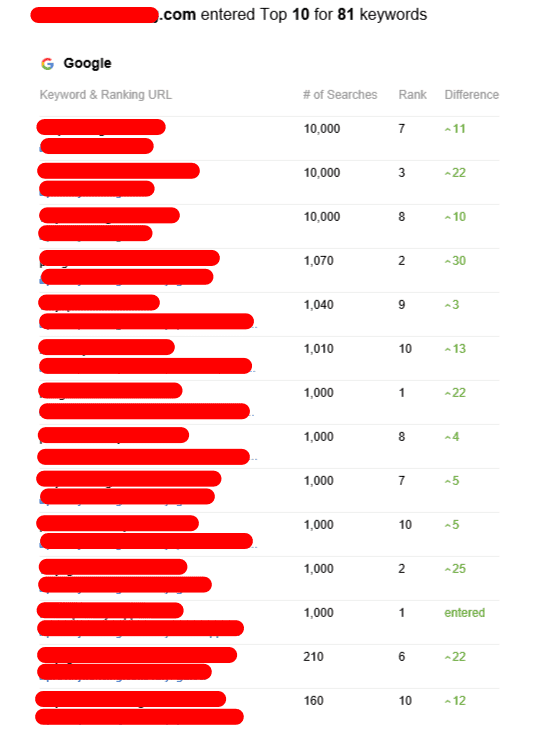Backlink Tier — The Hierarchy of Backlinks That Scale Your SEO Campaign
The Backlink Tier is the hierarchy of backlinks you create to scale your SEO campaign. Each level provides an extra layer of protection against Google’s penalties.
Tiered link building takes considerable time and effort to get it right. Google takes a long time to locate and evaluate new backlinks.
First-Tier Links
The first level of links that will lead to your piece of content must be high-quality dofollow backlinks on reputable websites. These links are called Tier 1 backlinks and act as the basis of your link building strategy. They endorse your web page, giving it the domain authority needed to rank well in search results pages. For example, if your blog article is published on HubSpot and it has a tier one link to SearchEngineLand’s compilation of Link Building Statistics, then SearchEngineLand’s web rankings would get an increase from the link equity passed on from HubSpot.
The second tier is more varied and include low-quality backlinks, such as spammy forums, or low-value bookmarking sites and directories. However, the goal with Tier 2 is to produce high-quality content that is linked to your first-tier links. This is because good content will enhance the article in which it resides and won’t be seen as something that is added to SEO purposes.
To create an effective tiered campaign, you’ll need to invest in quality tools and content such as RankerX or GSA. The time and effort spent doing a tiered marketing campaign manually is worthwhile if you intend to see the increased rankings of a well designed backlink pyramid.
Second-Tier Links
Tiered link construction is designed to direct users through external websites before reaching your website. It is essential to select relevant second-tier sources of backlinks that are relevant to both your site and your industry to ensure this happens. Contrary to profile profiles and guest blog posts, guest blog posts work very well for this function because they offer valuable content that people want to consume.
It is recommended to avoid using tier-2 links on forums or other sites of low quality. Instead, you should use high-quality pages like industry news or guest articles. These links appear more natural and have more impact on your search engine ranking. Additionally they what are tier 2 links more likely to be considered by Google as passing link equity, which can boost their value in SERPs.
If you’re building tier two links in the hopes to improve your SEO ranking it is important to be aware that it is difficult to obtain these kinds of high-quality backlinks manually. It can take several months to submit guest posts to top publishers and even longer for them to be published. In addition, it could take weeks to see the results of your efforts in increasing traffic to your site and conversions.
Alternatively, many SEOs turn to automated tools to create links of second-tier. But, this method could violate Google’s Webmaster guidelines and result in penalties.
Third-tier Links
The number of links on this tier is massive and can even be considered spammy. They are posted on social media platforms as well as user-generated content sites such as Quora. They help with the indexing of tier two links but don’t give any link equity to the resource promoted. They are typically nofollow links. At this point marketing, the focus is more on quantity rather than quality. They use tools to post a huge number of links in forums, in comments sections of articles and blog posts, in directories, and other similar places. This is where tiered link construction becomes a gray area and is in violation of Google’s webmaster guidelines.
Tiered link-building campaigns need an immense amount of time and effort to succeed. It could take weeks or even months to get Google to index one backlink, and after that it may take weeks or even months to notice a significant SEO impact. Marketers should be patient, and employ a meticulously-planned content strategy.
Marketers should also be wary of using too many automated tools to achieve this type of linking. These tools can violate rules for optimizing search engines and could result in penalties. It is better to manually choose and post hyperlinks on relevant donor websites instead of using automated services like GSA or RankerX. This will stop the search engine from penalizing the campaign using links that are not of high quality.
Fourth-Tier Links
Tiered link building is still a well-known method of gaining more website traffic. Since Google has been making major efforts to eradicate «black-hat» SEO techniques, tiered link building methods have suffered.
This is due to the fact that they are considered to be a gray area in the SEO world, and can be penalized if used improperly. Tiered links are backlinks that are built on various levels of a link pyramid. The main purpose of these backlinks is the increase in the ranking of a resource promoted in search engine results. The page promoted will be ranked higher than its rivals and will get more organic traffic.
The quality of backlinks within this tier is the plunge and they are generally nofollow. In addition the tier can be composed of low-quality social directories, media profiles and article networks. These links can be made by natural means or through intelligent automation tools, tier links but they must remain diversified in terms of domains or niches they are in and the relevance.
These backlinks, in addition to being low-quality and nofollow could also create problems when they’re not diversified enough. Google has a group of highly-trained hound dogs who are always looking for patterns and strategies within backlink profiles. If they do find them, not only can the link-building group be penalized, but also its clients.



